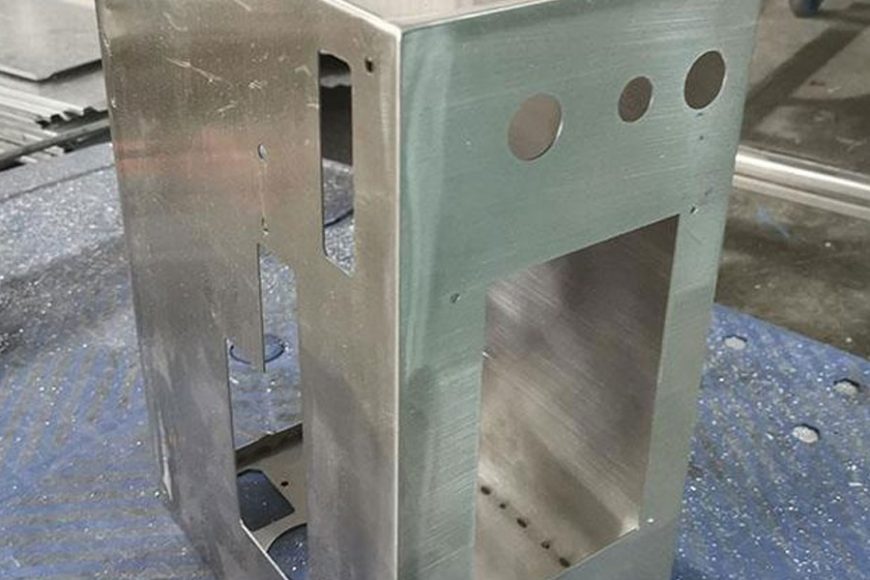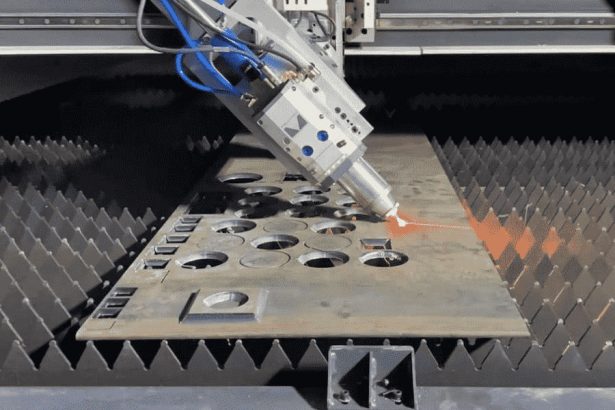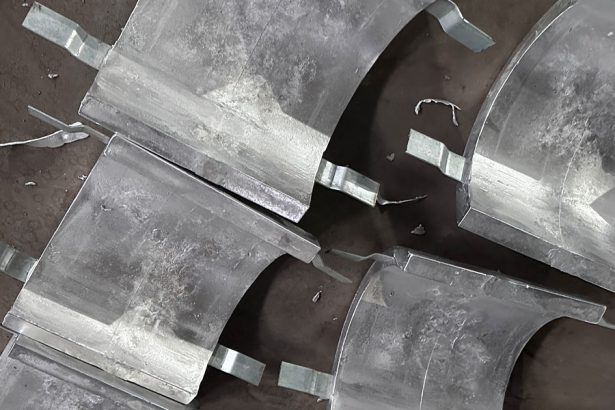Flexible fixtures represent a cornerstone of modern manufacturing, particularly in the realm of processing digital electronic sheet metal parts, where precision, adaptability, and efficiency converge to meet the demands of increasingly complex production environments. The design of such fixtures—mechanical systems engineered to hold, support, and position workpieces during machining, assembly, or inspection—has evolved significantly with advancements in digital electronics and sheet metal fabrication. This article delves into the intricacies of designing a flexible fixture tailored specifically for the processing of digital electronic sheet metal parts, exploring its theoretical foundations, practical considerations, material selections, structural configurations, and performance metrics. By emphasizing adaptability to diverse part geometries, rapid reconfiguration capabilities, and integration with automated systems, this discussion aims to provide a comprehensive understanding of how flexible fixtures enhance productivity and quality in contemporary manufacturing workflows.
Sheet metal parts used in digital electronics—such as enclosures for smartphones, laptops, servers, and other devices—require meticulous handling due to their thin profiles, intricate shapes, and the need for tight tolerances. These components often serve as structural frameworks or protective casings, housing delicate electronic circuits that demand precision in every dimension. Traditional fixed fixtures, while effective for high-volume production of identical parts, fall short in accommodating the variety of shapes, sizes, and specifications inherent in digital electronic manufacturing, where product lifecycles are short and customization is commonplace. Flexible fixtures address this limitation by offering a reconfigurable platform that can adapt to multiple part designs without necessitating extensive retooling or downtime, thus aligning with the principles of lean manufacturing and just-in-time production.
The concept of flexibility in fixture design hinges on the ability to adjust clamping, locating, and supporting elements to suit different workpieces. In the context of digital electronic sheet metal parts, this adaptability is paramount, as these components often feature complex geometries such as cutouts, bends, perforations, and embossed features. For instance, a sheet metal chassis for a computer motherboard might include folded edges, mounting holes, and recessed areas, each requiring precise alignment during processing steps like punching, bending, or laser cutting. A flexible fixture must therefore incorporate modular components—adjustable locators, programmable clamps, and interchangeable supports—that can be reconfigured swiftly to secure such parts without compromising stability or accuracy.
At the heart of the design process lies the selection of a structural framework for the fixture. Typically, this framework consists of a base plate or grid, often fabricated from high-strength materials like aluminum alloys (e.g., 6061-T6) or tool steel (e.g., AISI 4140), chosen for their durability, machinability, and resistance to deformation under load. Aluminum alloys are particularly favored in flexible fixture designs due to their lightweight nature, which facilitates manual or automated repositioning, and their excellent corrosion resistance, a critical factor in environments where electronic components are processed. The base plate serves as the foundation upon which locating and clamping mechanisms are mounted, often featuring a standardized grid of threaded holes or T-slots to enable rapid attachment and adjustment of fixture elements.
Locating elements are critical to ensuring that sheet metal parts are positioned accurately relative to the processing tools, such as CNC punch presses or laser cutters. In a flexible fixture, these elements might include adjustable pins, blocks, or nests that can be moved along the base plate to align with specific features of the workpiece, such as holes or edges. For digital electronic sheet metal parts, which often have thicknesses ranging from 0.5 mm to 3 mm, the locators must be designed to minimize contact stress and prevent deformation of the thin material. Hardened steel pins with polished surfaces or polymer-coated tips are commonly employed to achieve this balance, providing precise positioning while protecting the workpiece from scratches or dents.
Clamping mechanisms in flexible fixtures are equally vital, as they secure the workpiece against forces generated during processing. Unlike rigid fixtures, where clamps are fixed in position, flexible designs incorporate adjustable or programmable clamps that can be repositioned or reoriented to accommodate different part configurations. Pneumatic or hydraulic clamps are frequently utilized due to their ability to deliver consistent clamping force—typically in the range of 50 N to 500 N, depending on the part size and material—while allowing rapid engagement and release. For example, a pneumatic clamp with a stroke length of 10–20 mm can be mounted on a sliding rail, enabling it to adapt to varying part widths. Alternatively, vacuum clamping systems, which use suction to hold flat sheet metal parts against the fixture surface, offer a non-invasive solution for ultra-thin components, reducing the risk of surface damage.
The integration of automation into flexible fixture design has revolutionized their application in digital electronic manufacturing. With the rise of Industry 4.0, fixtures are increasingly equipped with sensors, actuators, and control systems that enable real-time adjustments and data feedback. For instance, proximity sensors can detect the presence and orientation of a sheet metal part, triggering actuators to reposition locators or clamps accordingly. This level of automation is particularly beneficial in high-mix, low-volume production scenarios, where a single fixture might need to handle dozens of unique part designs in a single shift. Moreover, connectivity to a central manufacturing execution system (MES) allows the fixture to receive digital instructions based on CAD models, ensuring seamless alignment between design specifications and physical setup.
Material selection for the fixture components extends beyond the base plate to include the locators, clamps, and supports. In addition to aluminum and steel, engineering plastics such as polyoxymethylene (POM) or polyamide (PA) are often used for non-load-bearing elements, offering low friction and wear resistance. For applications requiring electrical insulation—critical in electronics manufacturing to prevent static discharge—components may be coated with insulating materials like PTFE or fabricated from ceramics. The choice of material also influences the fixture’s thermal stability, as sheet metal processing techniques like laser cutting can generate localized heat, potentially causing expansion or warping if the fixture materials are not thermally compatible with the workpiece.
To illustrate the design considerations, consider a hypothetical flexible fixture designed for processing a sheet metal enclosure for a digital tablet. The enclosure, measuring 250 mm × 180 mm × 1.2 mm, features folded edges, a central cutout for the display, and multiple mounting holes. The fixture’s base plate, made of 6061-T6 aluminum, includes a 10 mm × 10 mm grid of M6 threaded holes. Four adjustable steel pins, each with a 5 mm diameter and a polymer tip, serve as locators, positioned to align with the enclosure’s corner holes. Two pneumatic clamps, each exerting 200 N of force, secure the part along its longer edges, mounted on rails for lateral adjustment. A vacuum pad, integrated into the base plate beneath the cutout area, provides additional support to prevent vibration during laser cutting. This configuration allows the fixture to be reconfigured in under 5 minutes to accommodate a different enclosure size, such as 300 mm × 200 mm × 1.5 mm, by repositioning the pins and clamps and adjusting the vacuum zone.
The performance of a flexible fixture can be quantitatively assessed through several key metrics: setup time, positioning accuracy, clamping force consistency, and reconfiguration flexibility. Setup time, the duration required to adjust the fixture for a new part, is a critical indicator of efficiency. For the tablet enclosure example, a target setup time of less than 5 minutes aligns with industry benchmarks for flexible manufacturing systems. Positioning accuracy, typically measured in micrometers, ensures that the workpiece aligns with the processing tool within tolerances—often ±0.05 mm for digital electronic parts. Clamping force consistency, verified through load cell measurements, confirms that the workpiece remains stable without excessive deformation. Reconfiguration flexibility, a qualitative metric, reflects the range of part geometries the fixture can accommodate, often expressed as a percentage of the total design space (e.g., 80% coverage of parts within a 500 mm × 500 mm footprint).
Comparative analysis of flexible fixture designs reveals the trade-offs between complexity, cost, and performance. Table 1 below provides a detailed comparison of three hypothetical fixture configurations—Basic, Intermediate, and Advanced—for processing digital electronic sheet metal parts.
Table 1: Comparison of Flexible Fixture Configurations
| Feature | Basic Configuration | Intermediate Configuration | Advanced Configuration |
|---|---|---|---|
| Base Material | Aluminum 6061-T6 | Aluminum 6061-T6 | Tool Steel AISI 4140 |
| Locator Type | Fixed Steel Pins | Adjustable Steel Pins with Polymer Tips | Programmable Servo-Driven Pins |
| Clamp Type | Manual Toggle Clamps | Pneumatic Clamps (200 N) | Hydraulic Clamps (500 N) |
| Support System | Flat Base Plate | Vacuum Pads | Adaptive Vacuum + Contoured Nests |
| Automation Level | None | Sensor-Based Feedback | Full MES Integration |
| Setup Time | 15 minutes | 5 minutes | 2 minutes |
| Positioning Accuracy | ±0.1 mm | ±0.05 mm | ±0.02 mm |
| Max Part Size | 300 mm × 200 mm | 400 mm × 300 mm | 500 mm × 400 mm |
| Reconfiguration Range | 50% of design space | 75% of design space | 90% of design space |
| Cost Estimate | $500 | $2,000 | $10,000 |
| Applications | Low-Volume Prototyping | Medium-Volume Production | High-Mix, High-Volume Production |
The Basic Configuration, while cost-effective, sacrifices flexibility and precision, making it suitable only for simple, repetitive tasks. The Intermediate Configuration strikes a balance, offering improved accuracy and automation at a moderate cost, ideal for mid-tier manufacturers. The Advanced Configuration, with its servo-driven locators and full automation, excels in high-mix environments but demands significant investment, aligning with large-scale producers of digital electronics.
Beyond structural and mechanical design, the ergonomics of flexible fixtures must be considered, particularly in semi-automated or manual setups. Adjustable components should be accessible without excessive reaching or force, adhering to standards like ISO 14738, which governs workplace ergonomics. For instance, clamp release mechanisms should require no more than 50 N of hand force, and locator adjustments should be tool-less where possible, using knobs or levers instead of wrenches. This focus on usability enhances operator efficiency and reduces fatigue, critical in production lines running 24/7.
The design process itself is iterative, often beginning with computer-aided design (CAD) modeling to simulate the fixture’s interaction with various sheet metal parts. Finite element analysis (FEA) is employed to evaluate stress distribution, deformation, and thermal effects under processing conditions. For example, an FEA simulation of the tablet enclosure fixture might reveal that a clamping force of 300 N causes a 0.03 mm deflection in the 1.2 mm thick aluminum sheet, prompting a reduction to 200 N or the addition of a support pad. Prototyping follows, using additive manufacturing (e.g., 3D-printed PLA) for non-load-bearing components and CNC machining for metal parts, allowing designers to validate the fixture’s performance before full-scale production.
Environmental considerations also influence flexible fixture design, as sustainability becomes a priority in manufacturing. Aluminum and steel components should be sourced from recycled stocks where feasible, and the fixture’s modularity should enable disassembly for reuse or recycling at end-of-life. Energy-efficient actuators, such as low-power pneumatic systems, reduce the fixture’s operational footprint, aligning with green manufacturing initiatives.
In practice, the implementation of flexible fixtures requires alignment with broader manufacturing systems, including tool paths, robotics, and quality control. For digital electronic sheet metal parts, integration with coordinate measuring machines (CMMs) ensures that post-processing dimensions match design specifications. The fixture’s adaptability must also account for upstream processes like blanking or downstream tasks like assembly, where additional features (e.g., temporary alignment pins) might be incorporated.
The evolution of flexible fixtures reflects broader trends in manufacturing technology, from the adoption of digital twins—virtual replicas that mirror the fixture’s real-time state—to the use of artificial intelligence for predictive maintenance. A digital twin of the tablet enclosure fixture, for instance, could monitor clamp wear and suggest adjustments before failures occur, while AI algorithms might optimize locator positions based on historical part data. These advancements underscore the fixture’s role not just as a passive tool, but as an active participant in the smart factory ecosystem.
To further elucidate the design’s versatility, consider its application to a range of digital electronic sheet metal parts beyond the tablet enclosure. A server rack panel, measuring 482 mm × 44 mm × 2 mm, with multiple perforations and folded flanges, could be accommodated by extending the locator grid and adding a second set of clamps. Similarly, a smartphone backplate, at 150 mm × 70 mm × 0.8 mm, might require finer locators and a reduced clamping force of 100 N to avoid deformation. This scalability highlights the fixture’s ability to bridge diverse product categories within the electronics sector.
The economic implications of adopting flexible fixtures are significant, particularly for small and medium enterprises (SMEs) entering the digital electronics market. While the initial investment—ranging from $500 for a basic setup to $10,000 for an advanced system—may seem steep, the reduction in setup time and tooling costs can yield a return on investment (ROI) within months. For a facility producing 1,000 unique parts annually, a 10-minute reduction in setup time per part translates to 167 hours saved, or approximately $5,000 in labor costs at $30/hour, excluding gains in throughput and quality.
Challenges in flexible fixture design include balancing complexity with reliability. Over-engineered systems with excessive automation may introduce points of failure—e.g., sensor malfunctions or software glitches—that disrupt production. Conversely, overly simplistic designs may lack the precision needed for high-spec electronics. Rigorous testing, including accelerated life cycles and failure mode analysis, mitigates these risks, ensuring the fixture performs consistently across thousands of cycles.
In conclusion, the design of a flexible fixture for positioning in the processing of digital electronic sheet metal parts encapsulates a multidisciplinary approach, blending mechanical engineering, materials science, automation, and ergonomics. By prioritizing adaptability, precision, and integration with modern manufacturing systems, such fixtures empower producers to meet the dynamic demands of the electronics industry. As technology advances, the role of flexible fixtures will only grow, driving innovation in how we fabricate the components that power our digital world.




